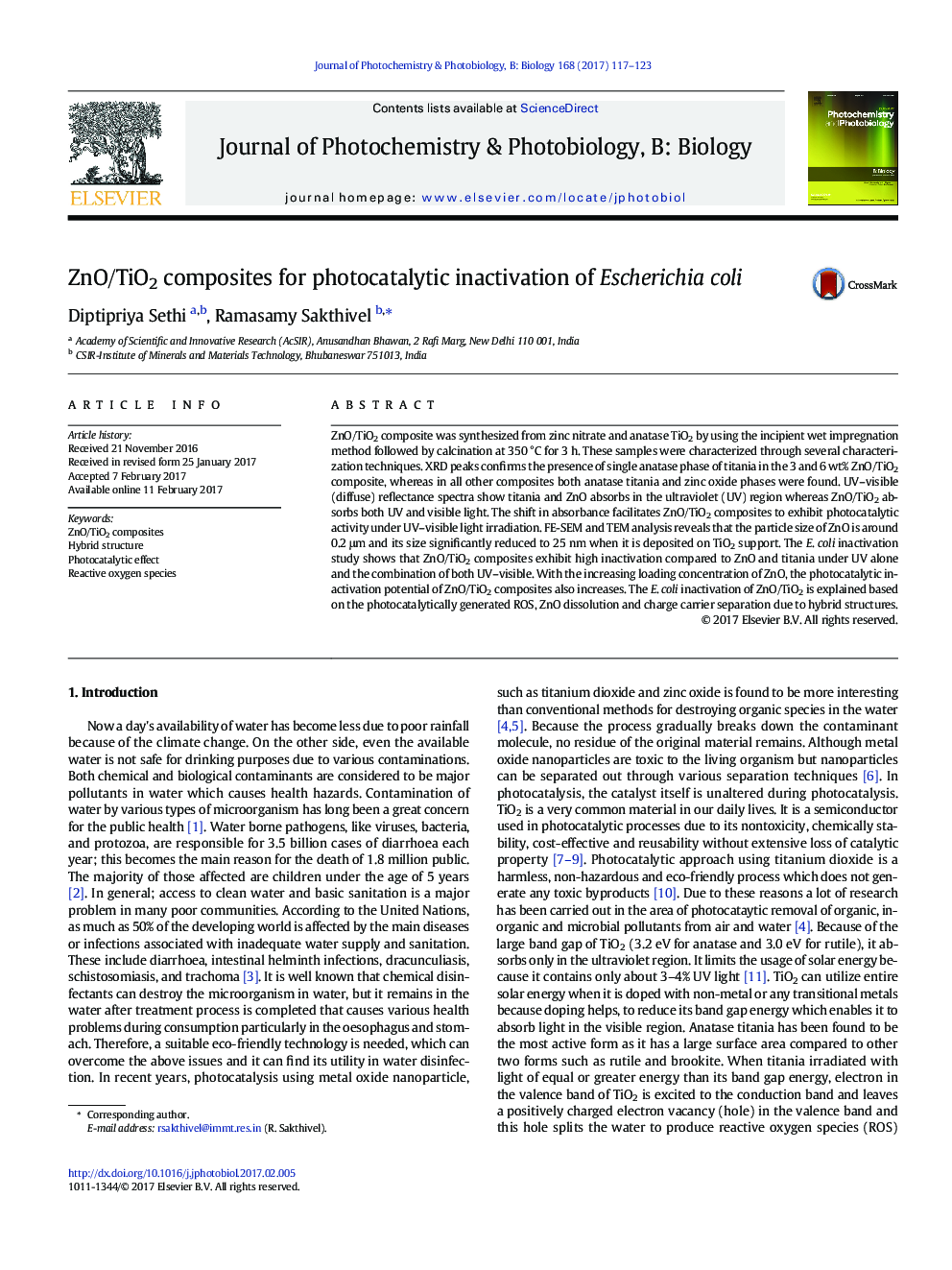| Article ID | Journal | Published Year | Pages | File Type |
|---|---|---|---|---|
| 4754539 | Journal of Photochemistry and Photobiology B: Biology | 2017 | 7 Pages |
â¢ZnO and ZnO/TiO2 inactivate the E. coli moderately in the absence of light.â¢E. coli inactivation potential of ZnO and ZnO/TiO2 accelerated by UV and UV-visible.â¢ZnO/TiO2 exhibit high inactivation potential than ZnO and TiO2.â¢ZnO dissolution and photocatalytic effects are responsible for E. coli inactivation.â¢Hybrid structure of ZnO/TiO2 promotes the photocatalytic effect.
ZnO/TiO2 composite was synthesized from zinc nitrate and anatase TiO2 by using the incipient wet impregnation method followed by calcination at 350 °C for 3 h. These samples were characterized through several characterization techniques. XRD peaks confirms the presence of single anatase phase of titania in the 3 and 6 wt% ZnO/TiO2 composite, whereas in all other composites both anatase titania and zinc oxide phases were found. UV-visible (diffuse) reflectance spectra show titania and ZnO absorbs in the ultraviolet (UV) region whereas ZnO/TiO2 absorbs both UV and visible light. The shift in absorbance facilitates ZnO/TiO2 composites to exhibit photocatalytic activity under UV-visible light irradiation. FE-SEM and TEM analysis reveals that the particle size of ZnO is around 0.2 μm and its size significantly reduced to 25 nm when it is deposited on TiO2 support. The E. coli inactivation study shows that ZnO/TiO2 composites exhibit high inactivation compared to ZnO and titania under UV alone and the combination of both UV-visible. With the increasing loading concentration of ZnO, the photocatalytic inactivation potential of ZnO/TiO2 composites also increases. The E. coli inactivation of ZnO/TiO2 is explained based on the photocatalytically generated ROS, ZnO dissolution and charge carrier separation due to hybrid structures.
Graphical abstractDownload high-res image (146KB)Download full-size image
